Five years ago, I decided to do a Permaculture Design Course (PDC) at Rak Tamachat Permaculture in Thailand. Rak Tamachat means "Love Nature" in Thai and - as a nature lover - this was right up my street! At the time, I was already living in south-east Asia and - as well as the the cost not being prohibitive - they offer an add-on natural building course after the PDC. I'm a big fan of natural building and prefer the possibility of more organically shaped structures in adobe, stucco, earthbag, strawbale, and so on. I hope to help build my own adobe earthbag house in the future. It's so much fun to do! But that's a topic for another post...
This blog post is dedicated to the banana in tropical permaculture. :-) 🍌
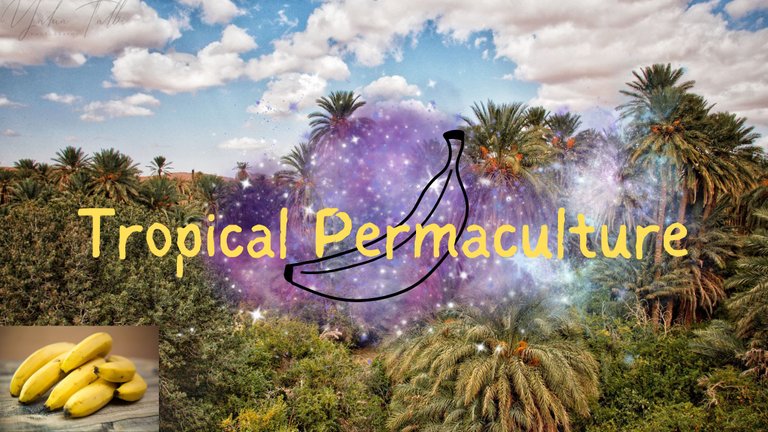
After completing the design course, my partner and I travelled overland back to Cambodia via Trat and the southern Thai island of Koh Kut. ( A magical place - really worth a visit!).
We ended up stopping in southern Cambodia and spent over two years DOING and BEING permaculture on the verge of Kep National Park. The experiences we had there were invaluable and I got to put into practice what I had learned almost straightaway. The best way to for me to learn natural farming techniques is to just become it. There were trials and tribulations - no mains electricity, gas or water, poisonous snakes, wild dogs, scorpions, mudslides, flooding, and stolen produce, to name but a few. However, I wouldn't change the experience for anything!
One of these priceless experiences was creating and benefitting from Banana Circles.........
What Does a Banana Circle Look Like?
The graphic below shows the basics of a banana circle - a round bank with an around 1 metre hole with bananas, cassava, root veg like taro and sweet potato, and lemongrass growing on it. The root vegetables stay relatively dry in the bank and provide ground cover/ living mulch for the soil. The cassava grows tall and provides shade, as well as habitat for creatures. Lemongrass grows well on the ridge; in the wild, taro is often found growing on the banks of rivers, streams, brooks, and creeks. Taro loves to grow beside slow running or stationary water sources. !

Organic matter (that turns into compost quickly) is put in the centre. This absorbs the water and keeps the circle hydrated. This significantly helps during the dry season since bananas are thirsty because they are a type of giant grass and need constant water. If water is scarce, you can lose your bananas, which frequently happens in communities during the dry season. Cambodia suffers from drought every other year these days and the roads are notoriously dusty. This also causes erosion, which bananas naturally help prevent by providing a natural barrier to stop erosion from spreading.
It also keeps the plants nutrient dense. When the bananas are harvested, you can chop and drop them into the middle, speeding up the recycling process, and you can use the matter as mulch, and then compost. Forest floors are nutrient dense because of these layers. 🎄
Creating Banana Circles
The below picture is during the digging of the hole and creating the berms around it. We sited this particular banana circle next to the hut that we lived in. It received full sun in the morning and benefitted from the shade from the building in the afternoon. We also installed the circle there to deal with our greywater. Banana circles can be used in tropical and sub-tropical climates to use waste water, run-off and overflow from rainwater tanks, and even urine waste from dry composting toilets. In our case, we used our non-toxic kitchen and bathroom waste water, but we did not get the chance to install compost toilets. This water went into the circle and kept the bananas and their companions moist.
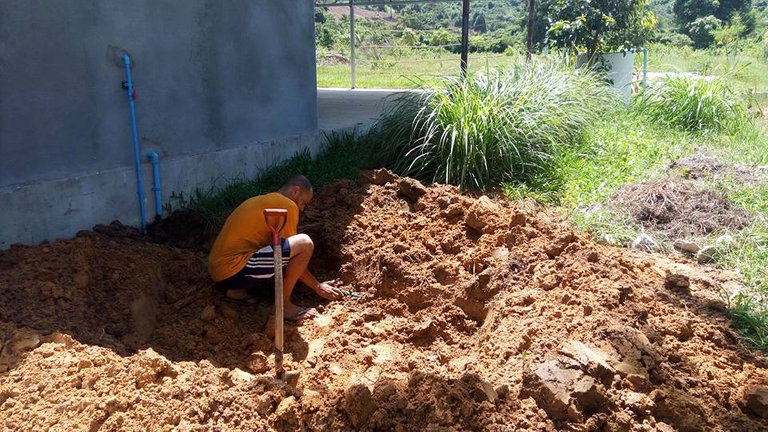
First, we dug out the circle, which was back-breaking work in the Cambodian sun, but which was done early in the morning (in flip flops no less !!!)
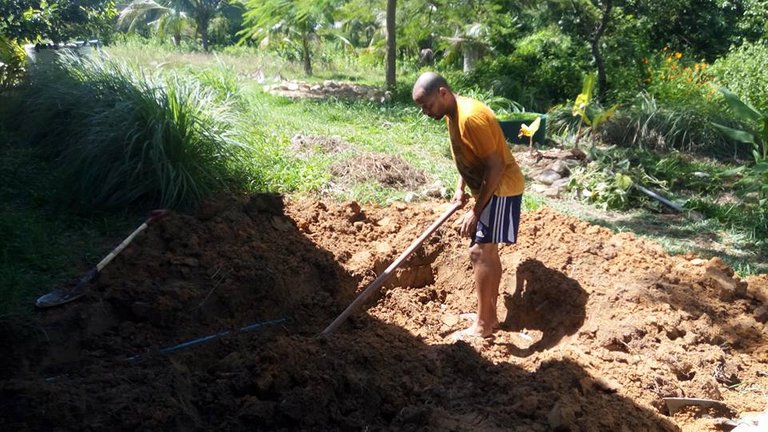

So, after we dug out the centre of the circle, we used recycled cardboard as ground cover/ mulch to prevent weeds growing underneath. The sun cannot get to the soil and so we prevented unwanted plants growing in the circle. Cardboard is also a great addition to the soil in terms of carbon.

Then we added organic matter - plant food waste, chopped and dropped leaves and branches, ground egg shells ( a great source of calcium), some cow dung from the local grazing herd, and whatever else we had that created nutrients.
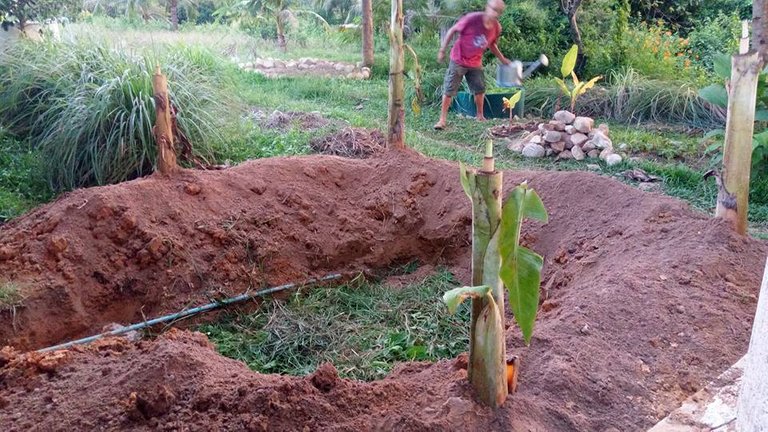
Then we planted young bananas, and their companions, waiting for our harvest. During this time, you add more compost to the centre - and be careful because it's a great haven for snakes, lizards, amphibians, and other small creatures. The frog chorus at night is magical! 🐸 I was lucky to see Asian spitting cobras, king cobras, Malaysian pit vipers, Russell's vipers and many more, but I kept a sensible distance and carried a stick around to check the long grass before stepping, which is advisable when visiting the wilds of Cambodia.
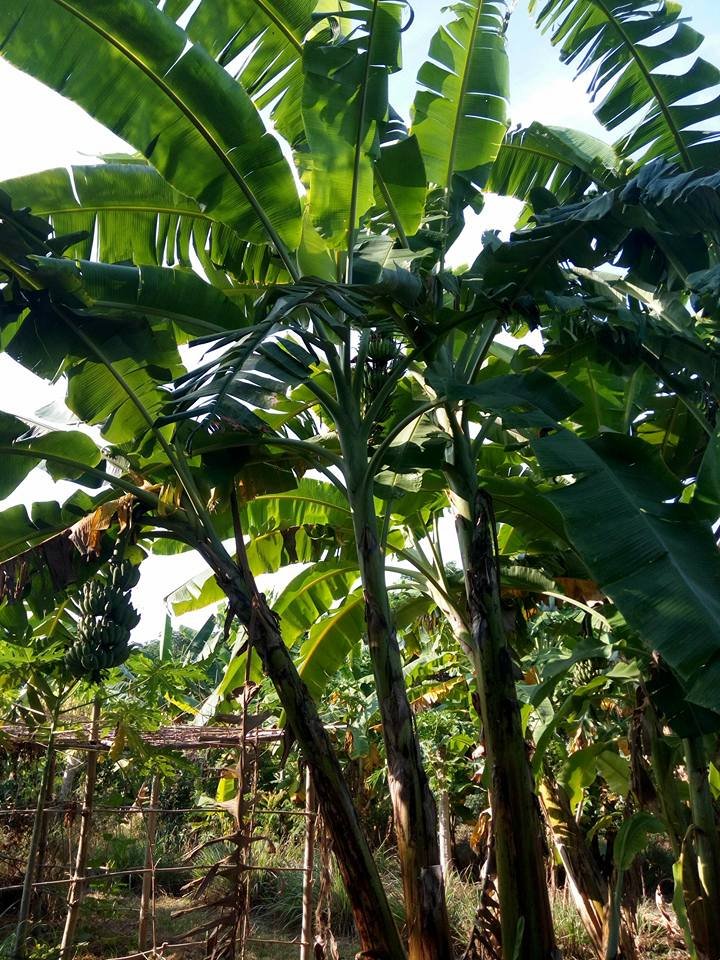

Bananas About Bananas🍌
Anyone growing food in the tropics has to be bananas about bananas! There are so many different types - not like the oftentimes anemic chemically processed supermarket ones.
These ones in my pictures below were harvested in Thailand at Rak Tamachat, where we learned not only about growing bananas, but also about harvesting and recycling them back into the land.
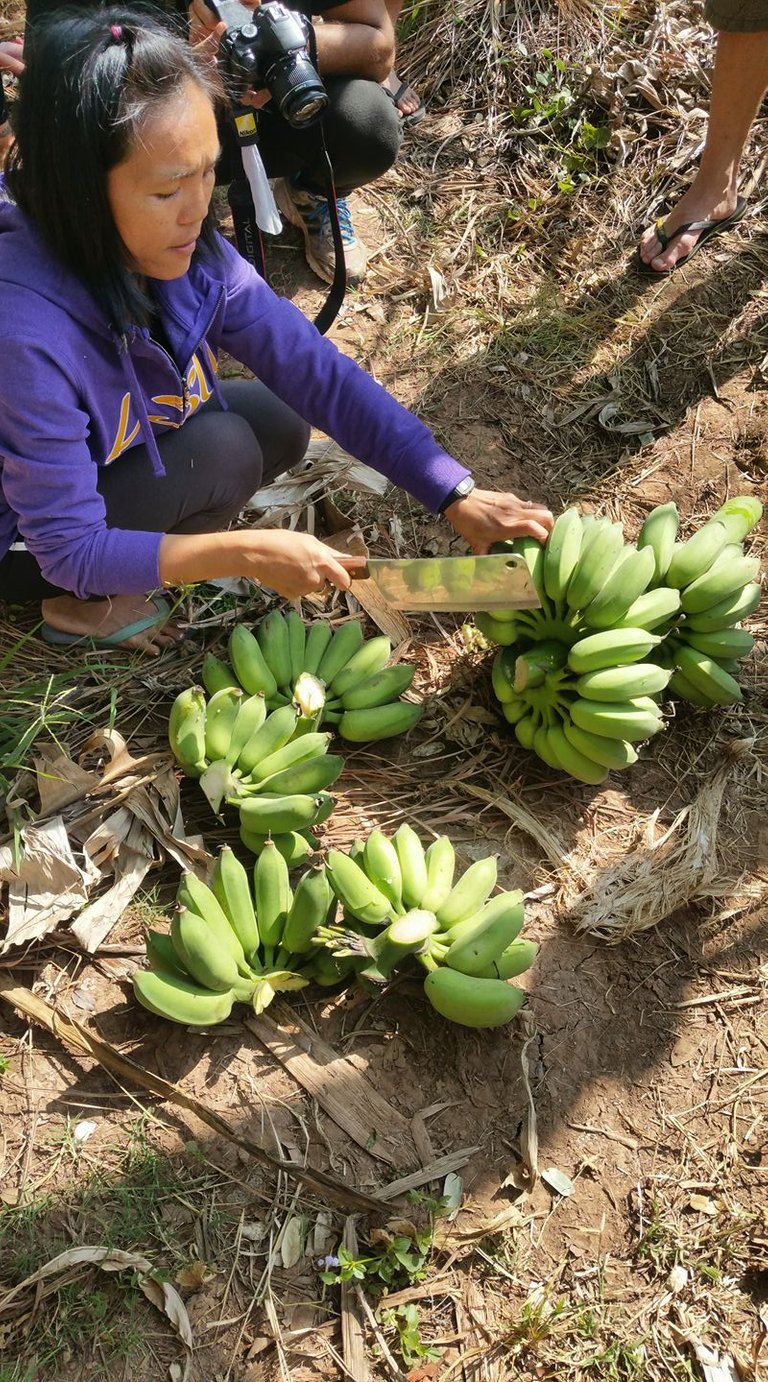
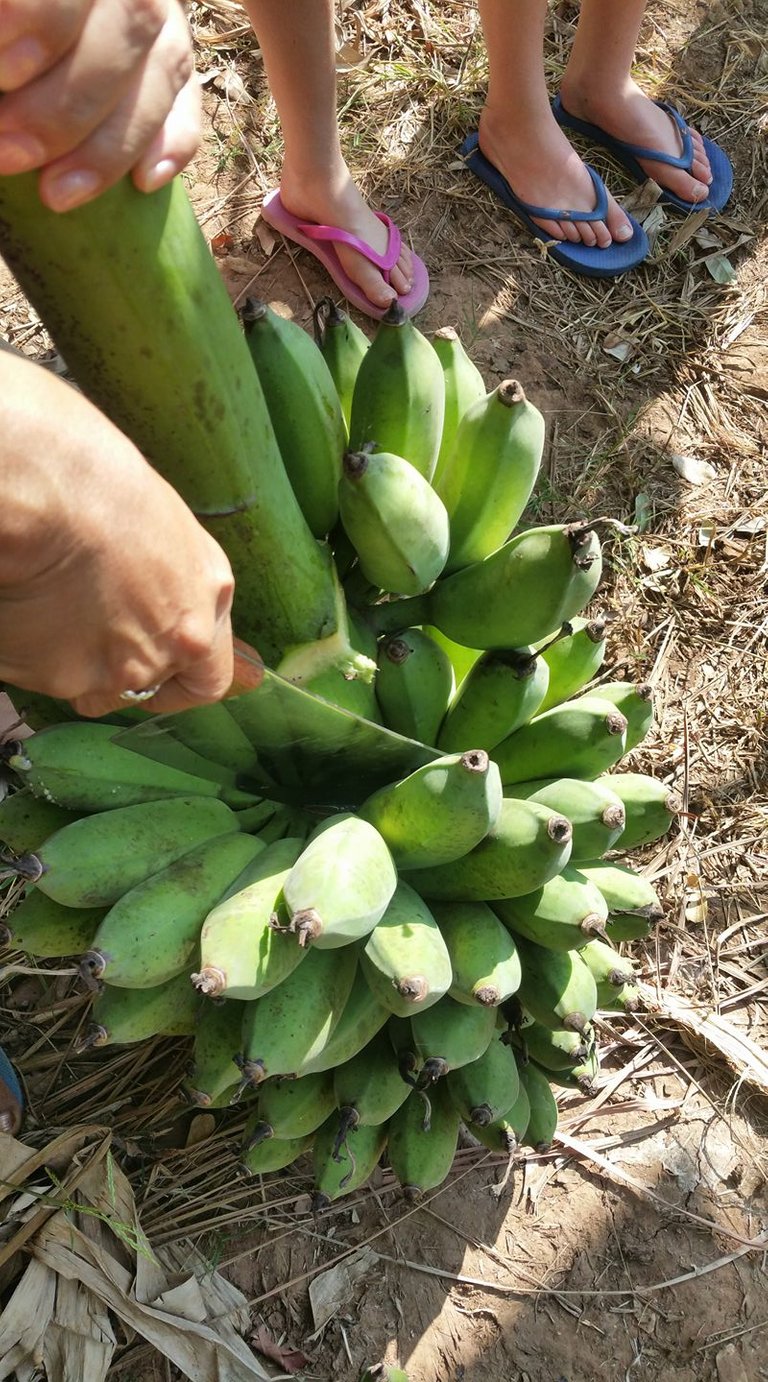
When we chopped down mature banana trees to allow for new growth, we learned not to waste any of the banana. In Asia, banana stem is a delicacy and so we made a delicious coconut curry with it. I also like to sauté it with garlic and chili, lime and fish sauce. It's yummy and highly nutritious. Every part of banana tree (it's actually a grass) is packed with nutrition and health benefits. The banana leaf has great digestive properties and can be used for food wrapping, as well as a makeshift plate!
Banana Flowers
The fruit is a great source of potassium and other vitamins, and the flower is good for diabetes and anti-ageing. Here is our mentor, Beau Wickboldt, who runs the permaculture farm in Thailand with his wonderful wife, Lin Wickboldt, their kids, the extended family and lots of permaculture students and volunteers. In this picture, Beau is demonstrating the harvesting of banana flowers and talking about the health benefits of eating it. Later, Lin added it to a Thai style vegan salad that we all loved! So delicious! Banana flower is eaten in Cambodia and Vietnam too - and it is also used in soups and stir-fries.
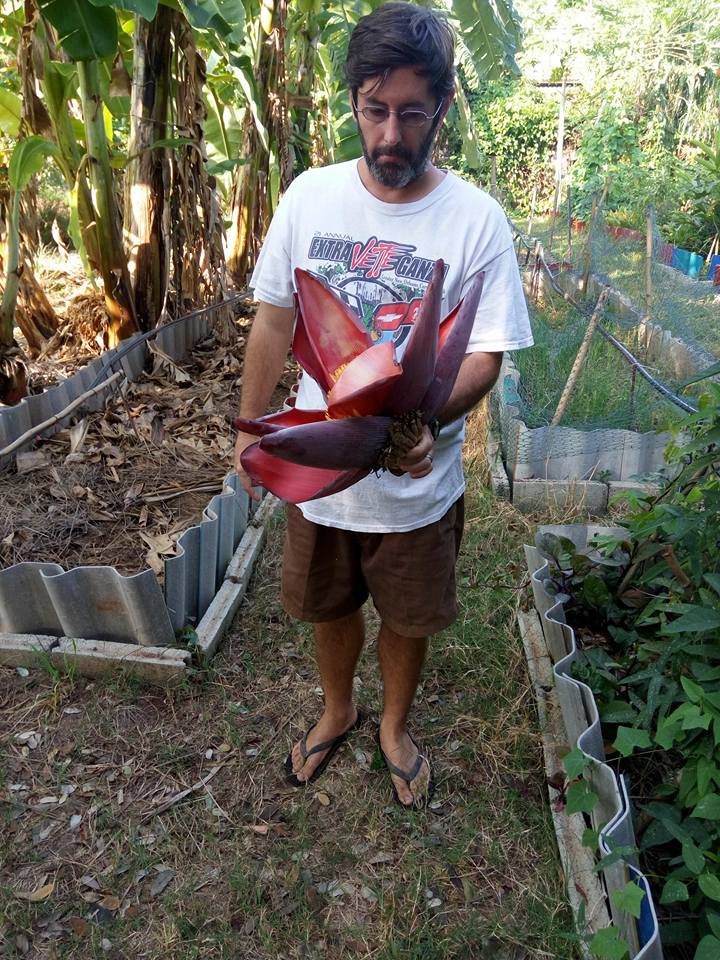
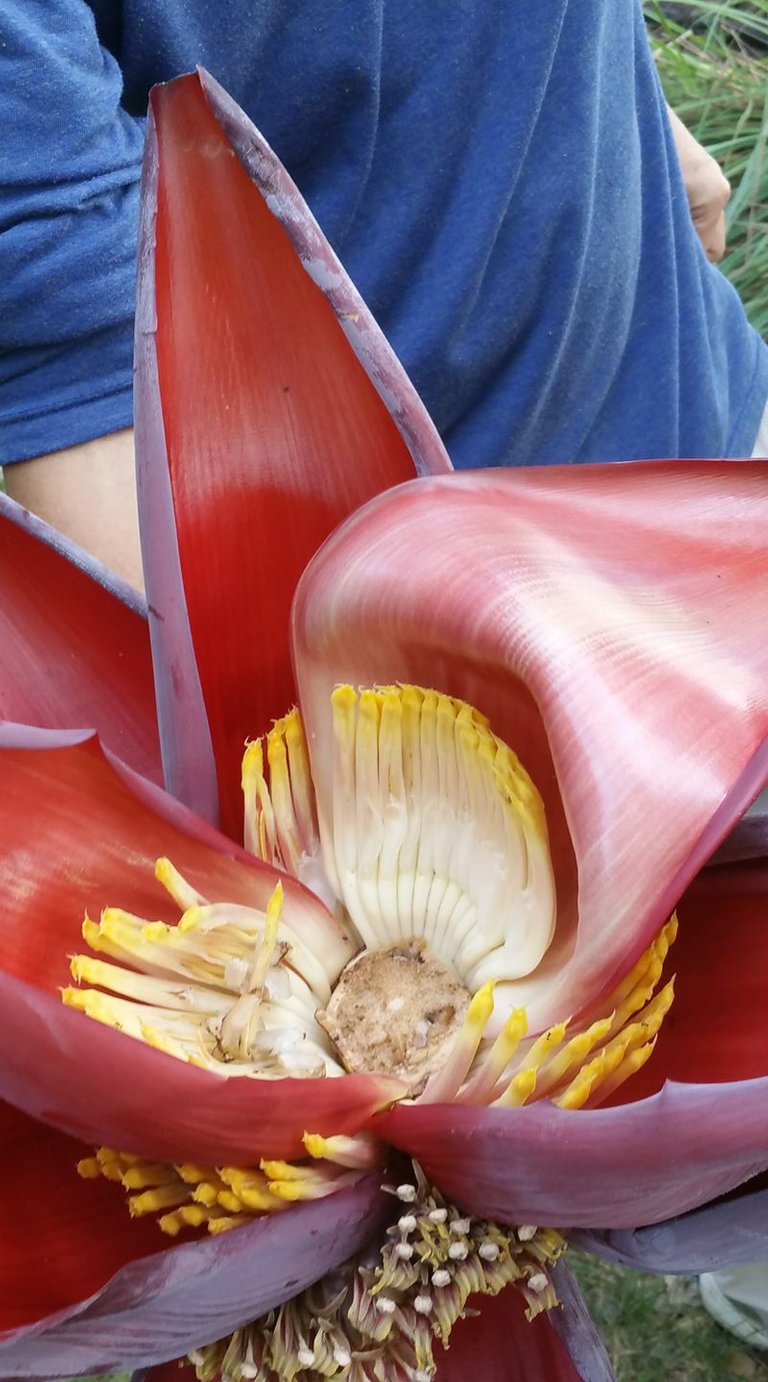
Banana Stem
The banana stem is also filled with amazing benefits such as detoxification and digestion, treating kidney stones and UTIs, weight loss, and blood pressure management.
This is the banana stem that was cut after all the ripe bananas had been harvested.
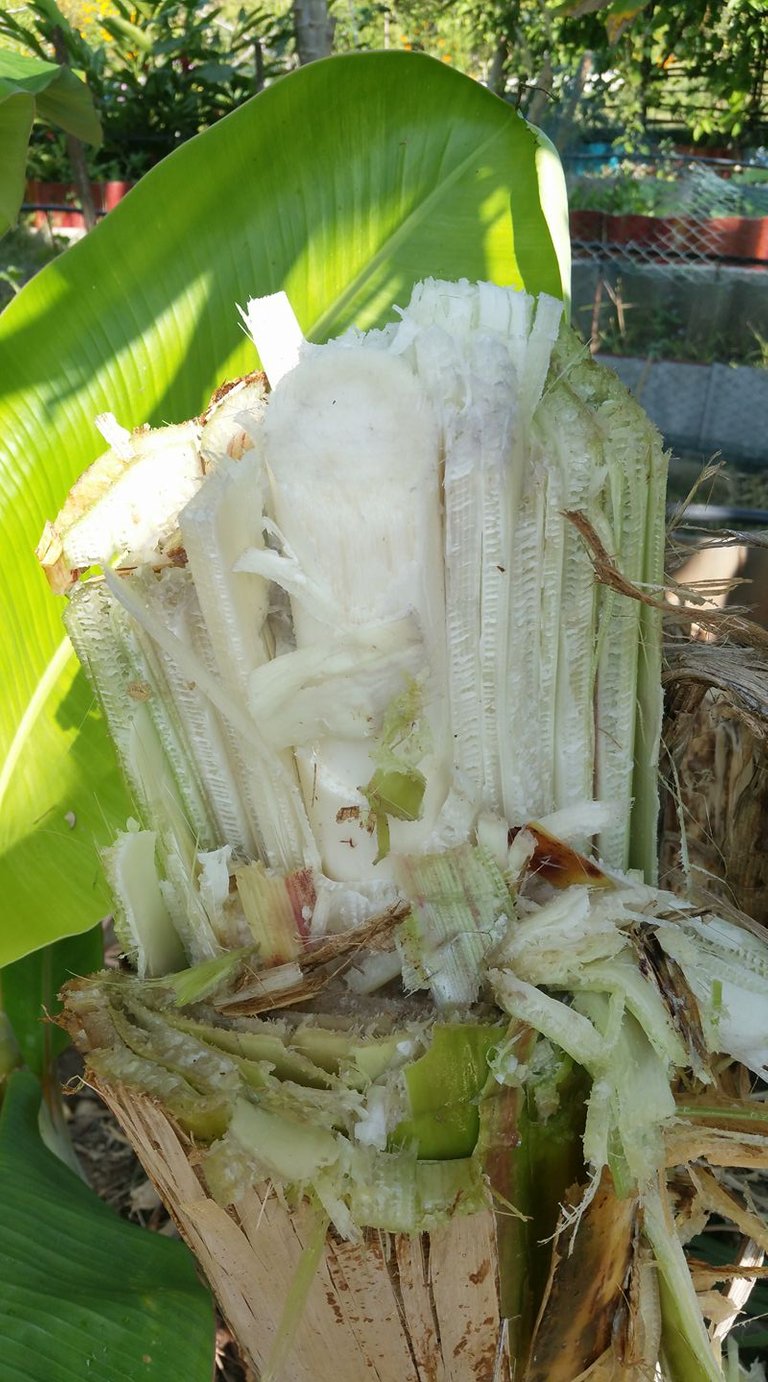
The very middle was removed, sliced into thin 5mm rings, and then sautéed. YUM !! 😍
If you are interested in tropical or sub-tropical permaculture check out Rak Tamachat's free Intro to Permaculture Course Online. That should whet your appetite!
Thanks for reading. I hope you enjoyed reading it as much as I enjoyed writing it! 💚
Much love and bananas
Marley and Me xx
All photos are my own
Images made in Canva
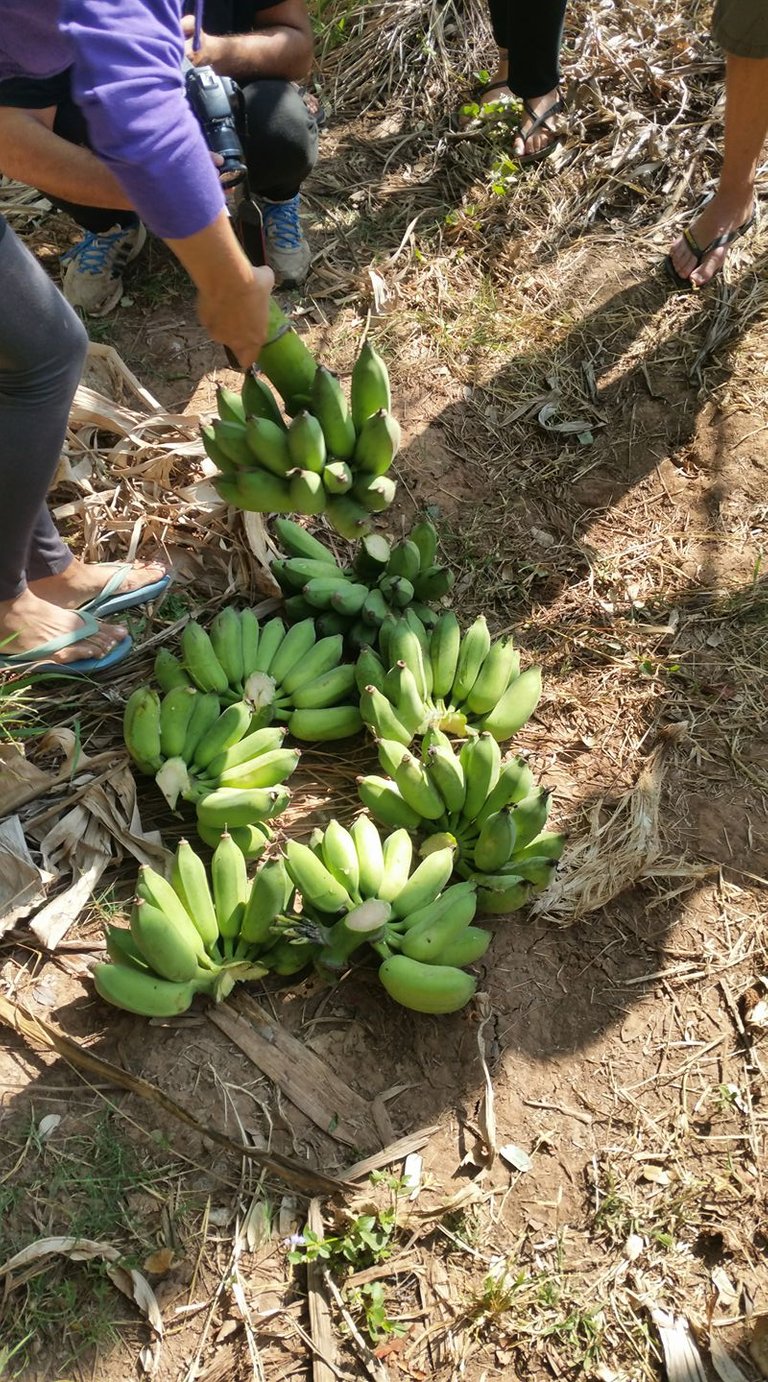
Wow! Now I know almost everything about bananas). And not only that!
Have a great day, buddy!
!PIZZA
Thank you - you also 😀
WOW! I'm not only bananas about bananas, but I am bananas about this awesome permaculture post of yours, the banana circle part was super informative! I love biodynamic systems, and as I am part of a family of Hawaiians, I am pretty bananas about taro root (POI!) and sweet potatoes too!
Thank you so much for sharing all this amazingness!!
!CTP
Oh wow! I bet the soil is incredible in most parts of Hawaii! I follow loads of growers there and lots in Florida too. I absolutely love the fact that many growers have so many divergent species and it fascinates me. Thank you for your kind comments and reblog 💚
Thats pretty damn amazing @marleyandme LOVE the post and what you have achieved!
Thanks sweetie - love the cheering banana ;-) 💛
Great post about tropical permaculture, @marleyandme. Reminds me of my attempts of growing bananas in our garden in Singapore. Wish I had known about the banana circle!
!HBIT
Success! You mined .9 HBIT & the user you replied to received .1 HBIT on your behalf. mine | wallet | market | tools | discord | subscribe | <>< daily
Contest: Nominate a symbol for the quark.
Thank you for your kind words - Singapore is really quite green. I really enjoyed my time there, especially the botanical garden- but around Singapore definitely more room for fruit tree lined streets 🍌🌴
wow. great work!
Thank you 🍌
That is a very valuable post, full of good knowledge, content and great work. Permaculture for the win. Good job - the work you have done at the Rak Tamachat PF in Thailand and you post!! Not to mention all the good karma you've accumulated. 😉
Well done.
!CTP
💚
That banana flower (blossom) made me remember the banana blossoms that I harvested a few days ago. I cooked them into a nice dish which my wife tasted for the first time and she loved it. Greetings from the Philippines!
💚
The rewards earned on this comment will go directly to the people sharing the post on Twitter as long as they are registered with @poshtoken. Sign up at https://hiveposh.com.
Thank you 💚
Congratulations @marleyandme! You have completed the following achievement on the Hive blockchain and have been rewarded with new badge(s):
Your next target is to reach 2750 upvotes.
You can view your badges on your board and compare yourself to others in the Ranking
If you no longer want to receive notifications, reply to this comment with the word
STOPCheck out the last post from @hivebuzz:
Support the HiveBuzz project. Vote for our proposal!
Thank you for a very informative post about permaculture.
Thank you 🌴